UPSC Daily Current Affairs-12th May 2024 | Current Affairs & Hindu Analysis: Daily, Weekly & Monthly PDF Download
GS-I/Geography
Supreme Court Order for Aravallis Range
Source: The Hindu

Why in News?
The Supreme Court has prohibited Gujarat, Rajasthan, Haryana and Delhi from granting new mining leases and renewals in the vulnerable ecosystem of the Aravallis.
About Aravallis
- Etymology: "Aravalli" is derived from Sanskrit, meaning "line of peaks" (Ara and Valli).
- Age: Dating back 350 million years, the Aravallis are among the oldest landforms on Earth.
- India's Oldest: They hold the title of being India's oldest mountain range.
- Geographical Coverage: Stretching across four states: Delhi, Haryana, Rajasthan, and Gujarat.
- Highest Point: The highest point, Gurushikhar, is located in Mount Abu.
- Characteristics: The Aravallis are characterized by rugged hills, rocky outcrops, and sparse vegetation, playing a crucial role in the region's ecology and hydrology.
Importance
- Natural Barrier: Aravalli acts as a geographical barrier, blocking dry winds from Afghanistan and Pakistan from reaching the Gangetic Plains. This prevents desertification and helps regulate the climate.
- Biodiversity Hotspot: Aravallis harbor rich diversity of flora and fauna, including dry deciduous forests, scrublands, grasslands, and wetlands. It's home to various plants, birds, mammals, reptiles, and insects.
- Water Catchment Area: The Aravalli Range serves as a crucial water catchment area, providing water for rivers, lakes, and groundwater recharge.
- Cultural Heritage: Aravalli Range holds significant historical and cultural sites, such as archaeological sites, temples, and forts, showcasing ancient civilizations' relics and ruins dating back thousands of years.
- Tourism Hub: The Aravallis are dotted with famous tourist destinations, displaying rich cultural heritage, stunning landscapes, and ancient history.
- Scenic Beauty: Renowned for breathtaking natural beauty, the Aravallis feature rugged hills, deep valleys, and panoramic vistas.
- Threats: Illegal mining and real estate activities threaten Aravalli's biodiversity in north-western India. These persist due to collaboration between unscrupulous individuals and administrative authorities. Urbanization also poses a threat to the region's flora and fauna.
- Solution: Balancing environmental protection with the livelihood of mining communities is crucial. The Ministry of Environment, Forest and Climate Change, along with the four states, must jointly address the issue of mining activities in the Aravalli Hills.
GS-II/International Relations
History of India and Nepal’s border issue
Source: Indian Express
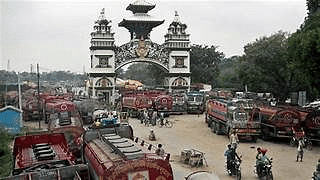
Why in News?
Nepal’s Cabinet last week decided to put a map on its Rs 100 currency note showing certain areas administered by India in Uttarakhand as part of its territory.
- India’s External Affairs Ministry said that such “unilateral measures” by Kathmandu would not change the reality on the ground.
Genesis of the issue:
- Treaty of Sugauli (1815-16): This treaty marked the end of the Anglo-Nepalese War and resulted in Nepal ceding significant territories to the British East India Company, including lands east of the Kali River. Article 5 of the treaty delineated the boundary along the river, thereby affecting Nepal’s jurisdiction over the area.
- Historical division: Maps issued by the British Surveyor General of India in the 19th and early 20th centuries depicted the Kali River as originating from Limpiadhura. These maps served as crucial references for defining territorial boundaries between Nepal and British India.
- Depiction of Kali River: Maps from different periods showed variations in the depiction of the Kali River, with some using the name “Kuti Yangti” and others referring to it as the Kali River. Additionally, discrepancies emerged regarding the river’s exact origin point, with some maps showing different sources.
- Map issued by Britisher (1947): The last map issued by the British before they left India in 1947 reverted to showing the initial position of the Kali River originating in Limpiadhura, indicating a reaffirmation of the historical boundary according to British cartographic records.
Argument given by Nepal to claim land:
- According to Shrestha, villages in this area — Gunji, Nabhi, Kuti, and Kalapani, also known as Tulsi Nyurang and Nabhidang — were covered by the Nepal government census until 1962, and the people paid land revenue to the government in Kathmandu.
- However, the situation changed after the war between India and China of 1962.
- Nepal also says that then Indian PM Jawaharlal Nehru approached King Mahendra of Nepal asking for permission to use Kalapani, which was strategically located close to the trijunction, as a base for the Indian Army.
- Prominent personalities representing Nepal in bilateral talks have claimed that India has made assurances regarding the resolution of border disputes if Nepal could provide evidence for its claims.
- Despite assurances and agreements to expedite the resolution process, progress has been slow or stalled.
Frictions in Bilateral Ties:
- From 2005-2014: The period from 2005 to 2014 saw India mediating Nepal’s transition from a Hindu Kingdom to a secular federal republic.
- However, tensions arose in 2015 when Nepal’s Maoist Party rejected India’s suggestion to delay the adoption of a new constitution until the concerns of the Terai parties were addressed.
- The subsequent 134-day blockade by India in September 2015 exacerbated distrust and led Nepal to seek alternative trade routes, including agreements with China.
- During 2020: Nepal’s inclusion of disputed territories, such as the 372 square kilometers in Uttarakhand, in its new map in 2020 escalated tensions with India. While Nepal aimed to assert sovereignty over these areas, India condemned the move as “cartographic aggression.”
- Despite India’s stance that the issue should be resolved diplomatically based on evidence, no concrete steps have been taken to address the dispute.
- During 2024: The decision by Nepal’s cabinet to include the new map on its currency notes in 2024 has reignited tensions between the two countries.
Way Forward:
- Need for Dialogue: While both India and Nepal agree on the need to resolve territorial disputes through dialogue and evidence-based discussions, there has been no concrete progress in scheduling meetings or setting a timeframe for resolution.
- Need for Dispute settlement: Nepal has successfully resolved boundary issues with China in the past through bilateral meetings of the boundary commission. However, the unresolved disputes with India highlight the importance of timely and effective diplomatic engagement to prevent future complications and ensure peaceful coexistence between the two neighbors.
- Joint Border Commission: Establishing a joint border commission comprising representatives from both countries can facilitate a systematic review of historical documents, maps, and evidence related to territorial claims.
GS-II/Governance
Use of Mother Tongue in Early Stages of Education
Source: The Hindu
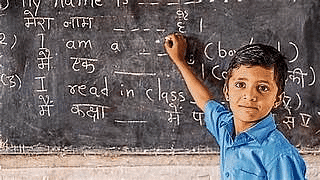
Why in News?
The Central Board of Secondary Education (CBSE) has instructed all its schools to make use of educational material which will focus on learning in one’s mother tongue and encourage multilingual education.
Constitutional Provisions/ Laws
- Under Article 350A of the Constitution, the government must try to ensure that children from linguistic minority groups are educated in their mother tongue.
- Article 29(1) states Any section of the citizens residing in the territory of India or any part thereof having a distinct language, script or culture of its own shall have the right to conserve the same.
- Section 29(f) of Chapter V under Right to Education Act, 2009 states that, “medium of instructions shall, as far as practicable, be in child’s mother tongue.”
Importance of mother tongue in children development
- Early Education in Mother Tongue: Crucial for learning new languages, fostering understanding, confidence, and a love for learning.
- Benefits: Enables deeper grasp of concepts, encourages critical thinking, and strengthens cultural connections.
- Linguistic Diversity in India: India has hundreds of languages spoken across the country.
- Preservation of Cultural Heritage: Children learning in their mother tongue preserve their cultural heritage and contribute to its continuation.
- Social Integration: Language plays a significant role in social integration.
- Community Communication: Children educated in their mother tongue facilitate better communication within their community.
- Strengthening Social Bonds: Mother tongue education strengthens social bonds.
Steps taken by government
- The Jharkhand government and UNICEF initiated a pilot programme for multilingual education in 259 schools.
- It involved the development of resources and content in the Ho, Mundari, Khariya, Santali and Kurukh languages spoken by Tribals.
- Odisha’s government, with UNICEF, created ‘Nua Arunima,’ (New Horizons) a mother tongue-based early childhood education curriculum available in 21 languages.
- The National Education Policy 2020 focuses on multilingualism and the use of familiar language for learning until at least Grade 5, but preferably till Grade 8 and beyond.
- The policy recommends preparing textbooks and related reading material in home languages and asks teachers to use them for communication in the classroom.
- The NIPUN Bharat Mission: The Mission Implementation Guidelines suggests that the teaching learning process and development of teaching learning material should be done in mother tongue.
Way Ahead
- In India, a multilingual educational approach that uses familiar languages as a foundation could deliver positive outcomes.
- Effective implementation on the ground requires sustained efforts from diverse stakeholders.
- Empowering teachers through multilingual training, developing mother tongue-based learning materials that are engaging, and supporting local communities in the advocacy of their languages are all crucial steps.
GS-II/International Relations
India backs Palestine’s bid for full UN membership
Source: The Hindu
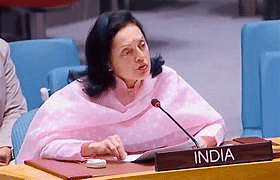
Why in News?
About United NationsIndia has voted in favour of a UN General Assembly resolution recommending Palestine’s admission as a full member of the United Nations.
| Details | |
| Background |
|
| Predecessor |
|
| The Atlantic Charter |
|
| Naming |
|
| Declaration by United Nations |
|
| Official Formation |
|
| First General Assembly |
|
| Core Goals |
|
| India’s Role |
|
Rights and Privileges
- The rights and privileges of member states in the United Nations are designed to ensure that all members can effectively participate in the organization’s activities and benefit from its resources.
GS-II/Polity and Governance
What is Interim Bail?
Source: The Hindu
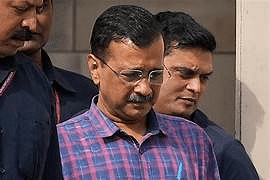
Why in News?
The Supreme Court has granted interim bail to Delhi Chief Minister Arvind Kejriwal in the liquor policy case till to campaign for the Lok Sabha elections.
What is Interim Bail?
- Interim bail in India is a temporary release granted to an accused person from custody under Section 439 Cr.
- It can be granted to address urgent matters such as medical emergencies, family crises, or other significant personal issues.
Legal Provisions for Interim Bail
Interim bail in India is NOT explicitly defined under a specific statute but is derived from the discretionary powers granted to courts under various legal provisions.
The most relevant laws and principles include:
- Code of Criminal Procedure, 1973 (CrPC): While the CrPC does not explicitly mention “interim bail,” it provides the framework for granting bail in general. Sections like 437 (bail in non-bailable cases by Magistrate), 438 (anticipatory bail), and 439 (special powers of High Court or Court of Session regarding bail) are used by courts to grant bail, including interim bail, based on judicial discretion.
- Constitutional Provisions: The Constitution of India under Article 21, which guarantees the right to life and personal liberty, is often interpreted to include the right to bail as part of the fair and just legal process.
GS-III/Science and Technology
World’s Largest Facility Designed to Remove CO2 from Atmosphere
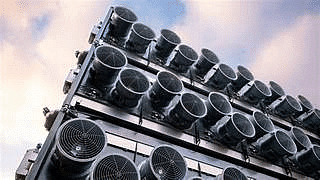
Why in News?
The World’s largest facility designed to remove carbon dioxide from the atmosphere started operations in Iceland.
About
- It is named Mammoth and it is the second commercial direct air capture (DAC) facility in the nation and is significantly larger than its predecessor, Orca, which began in 2021.
- It is situated on a dormant volcano in Iceland and 50 kilometres from an active volcano.
- The facility draws in air and chemically extracts captured carbon by turning it into stone beneath the earth’s surface, utilizing Iceland’s abundant geothermal energy to power the process.
- It aims to remove 36,000 tons of carbon annually— equivalent to removing about 7,800 gas-powered cars from the road each year.
Direct Air Capture (DAC) Facility
- DAC technologies extract CO2 directly from the atmosphere at any location, unlike carbon capture which is generally carried out at the point of emissions, such as a steel plant.
- The CO2 can be permanently stored in deep geological formations or used for a variety of applications.
- To date, 27 DAC plants have been commissioned in Europe, North America, Japan and the Middle East capturing almost 0.01 Mt CO2/year.
Concerns of Direct Air Capture (DAC) Facility
- Energy Requirements: DAC facilities require significant amounts of energy to operate, which could potentially exacerbate rather than alleviate carbon emissions if the energy source is not renewable or low-carbon.
- Cost: Building and operating DAC facilities is expensive, especially at scale.
- Scalability: While DAC technology shows promise, its scalability remains uncertain.
- It’s unclear whether DAC can be scaled up sufficiently to make a meaningful impact on global carbon dioxide levels and climate change mitigation efforts.
- Diversion from Natural Solutions: Some argue that investing in DAC technology may divert attention and resources away from natural climate solutions like reforestation.
Carbon Capture Technologies
- The technologies can be broadly categorized into three main types: pre-combustion capture, post-combustion capture, and oxy-fuel combustion.
- Pre-Combustion Capture:
- Gasification: Involves converting carbon-containing feedstock, such as coal or biomass, into a synthesis gas (syngas) composed primarily of carbon monoxide (CO) and hydrogen (H2). The CO2 can then be separated from the syngas before combustion.
- Chemical Looping Gasification: Utilizes metal oxide particles to indirectly convert carbon-containing fuel into syngas. The metal oxide captures the carbon from the fuel, and then the CO2 can be separated from the metal oxide.
- Integrated Gasification Combined Cycle (IGCC): Integrates gasification technology with a combined cycle power plant, allowing for efficient power generation while capturing CO2 before combustion.
- Post-Combustion Capture:
- Amine Scrubbing: Involves passing the flue gas from combustion through a liquid solvent, typically an amine solution, which absorbs CO2. The CO2-rich solvent is then heated to release the captured CO2 for storage or utilization.
- Membrane Separation: Uses selective membranes to separate CO2 from other gases in the flue gas based on differences in permeability. Adsorption: Utilizes solid materials, such as activated carbon or zeolites, to adsorb CO2 from the flue gas. The adsorbent is then regenerated by desorbing the CO2, allowing for multiple cycles of capture and release.
- Oxy-Fuel Combustion:
- Involves burning fossil fuels in oxygen instead of air to produce a flue gas consisting mainly of CO2 and water vapor.
- The CO2 can then be easily separated from the water vapor and other impurities, resulting in a concentrated stream of CO2 for storage or utilization.
Emerging DAC technologies
- Electro swing adsorption (ESA)-DAC is based on an electrochemical cell where a solid electrode absorbs CO2 when negatively charged and releases it when a positive charge is applied.
- It is currently being developed in the United States and United Kingdom.
- Zeolites are now being adopted for DAC due to their porous structure suitable for CO2 adsorption.
- The first operational DAC plant relying on zeolites was commissioned in 2022 in Norway, with plans to scale the technology up to 2 000 tCO2/year by 2025.
- Passive DAC relies on accelerating the natural process that transforms calcium hydroxide and atmospheric CO2 into limestone.
- This process is being engineered in the United States by a company using renewably powered kilns to separate CO2 from limestone.
Way Ahead
- Current global carbon removal efforts are capable of handling only about 0.01 million metric tons per year, far from the 70 million tons per year by 2030 to meet climate targets.
- With larger DAC plants under construction and more ambitious plans for future facilities, there is hope that significant progress can be made in combating climate change.
- Innovation in CO2 use opportunities, including synthetic fuels, could drive down costs and provide a market for DAC.
- Early commercial efforts to develop synthetic aviation fuels using air-captured CO2 and hydrogen have started, reflecting the important role that these fuels could play in the sector.
GS-III/Defence and Security
Kamikaze Drone
Source: Times of India

Why in News?
AboutThe utilization of the Lancet Kamikaze drone by Russia and the ongoing conflict in Ukraine underscores the intricate global supply chain challenges.
- A kamikaze drone, also known as a suicide drone or loitering munition, is an unmanned aerial vehicle (UAV) that is designed to carry out a single-use mission by crashing into its target.
- Unlike traditional drones that may return to base after completing their mission or be recovered for future use, kamikaze drones are typically equipped with explosives and are intended to inflict damage upon impact.
- These drones are often used in military operations for tasks such as reconnaissance, surveillance, and precision strikes against enemy targets.
- They offer several advantages, including their ability to be launched from a variety of platforms, their relatively low cost compared to manned aircraft, and their ability to engage targets with precision and minimal collateral damage.
|
63 videos|5408 docs|1146 tests
|
FAQs on UPSC Daily Current Affairs-12th May 2024 - Current Affairs & Hindu Analysis: Daily, Weekly & Monthly
| 1. What was the Supreme Court order regarding the Aravallis Range? |  |
| 2. What is the history of the border issue between India and Nepal? |  |
| 3. Why is the use of mother tongue important in the early stages of education? |  |
| 4. Why did India back Palestine's bid for full UN membership? |  |
| 5. What is interim bail? |  |





















